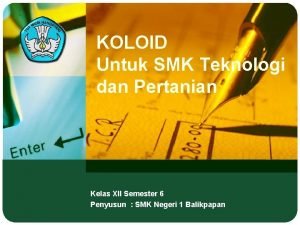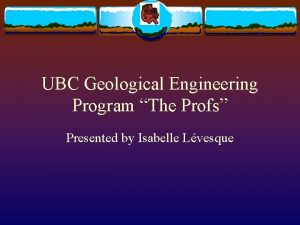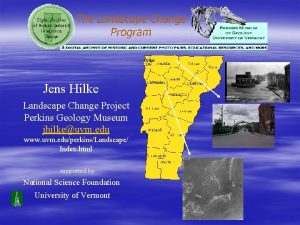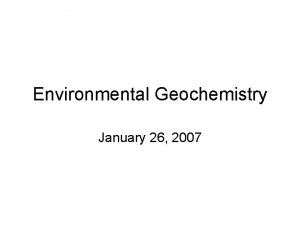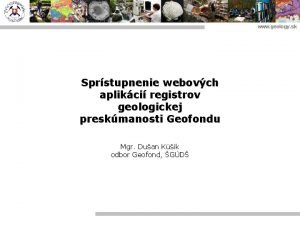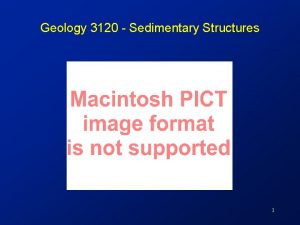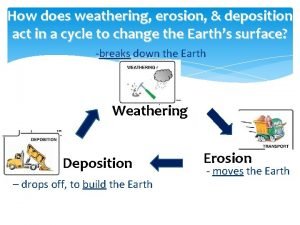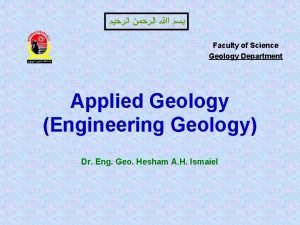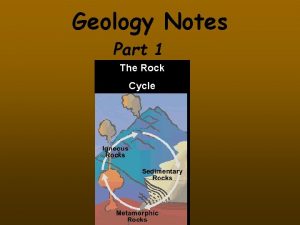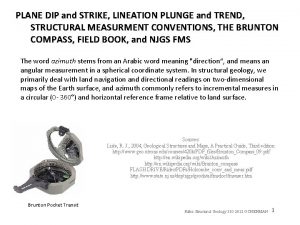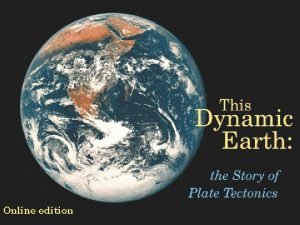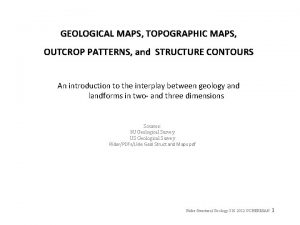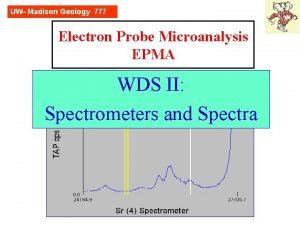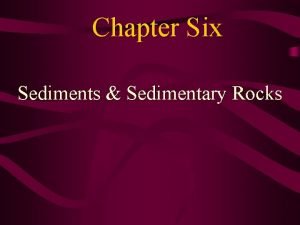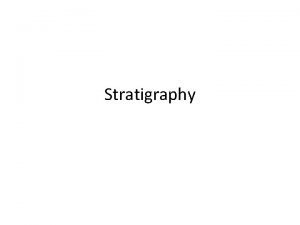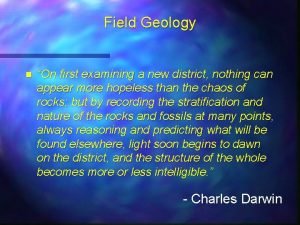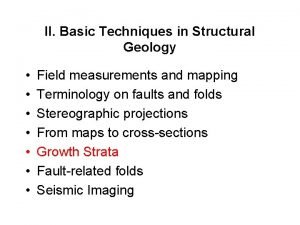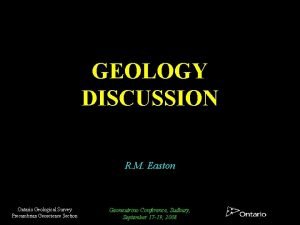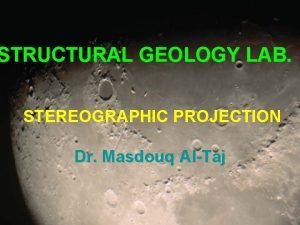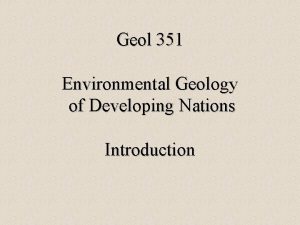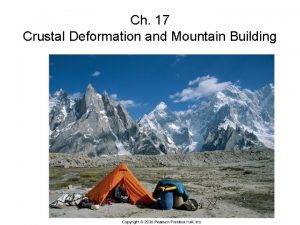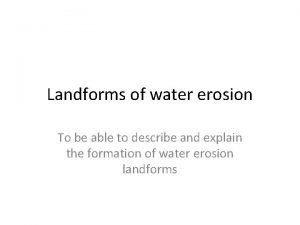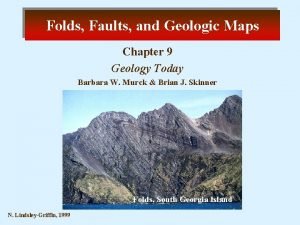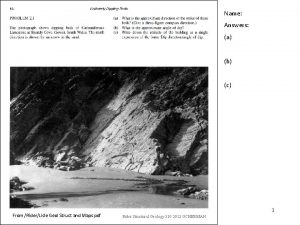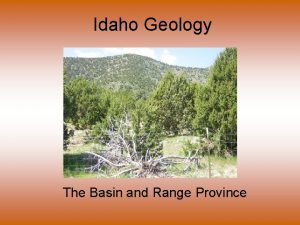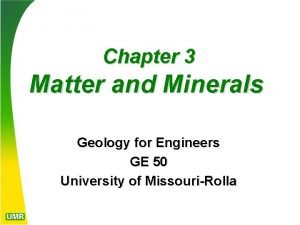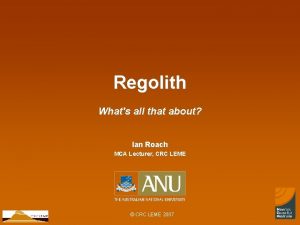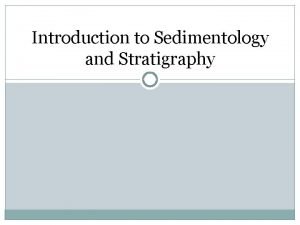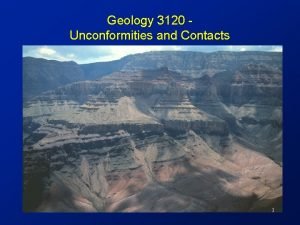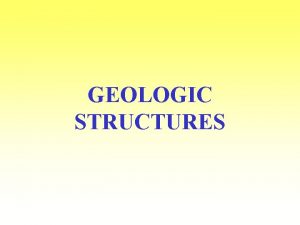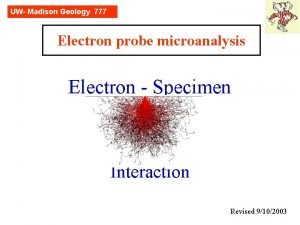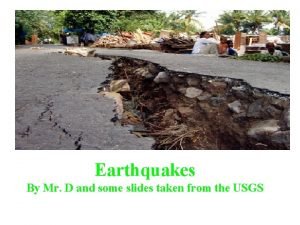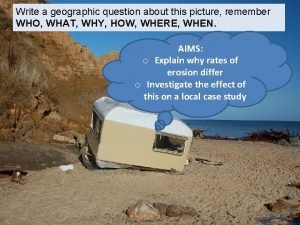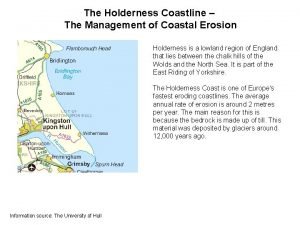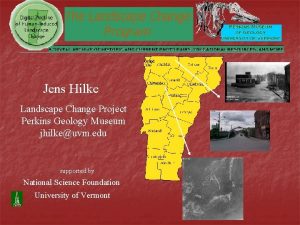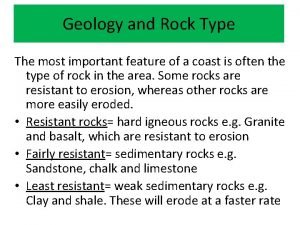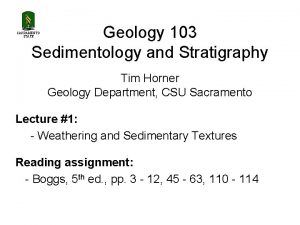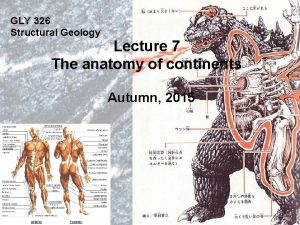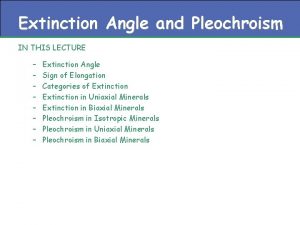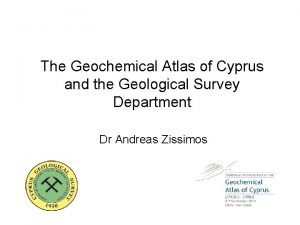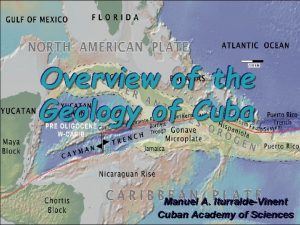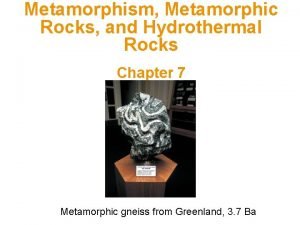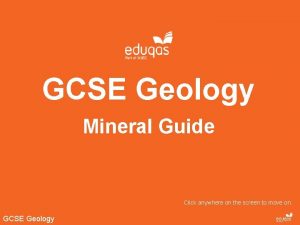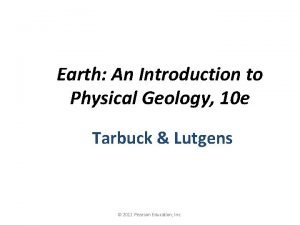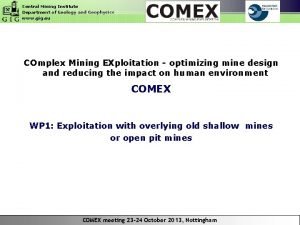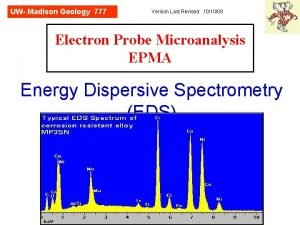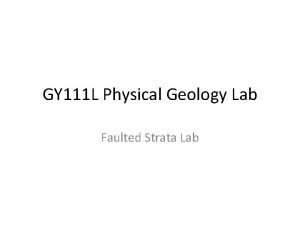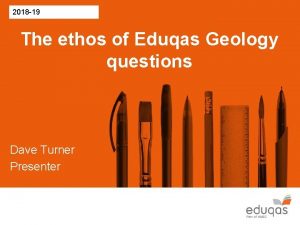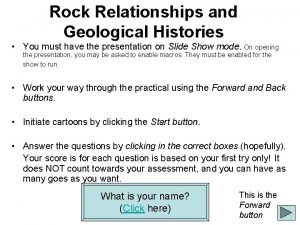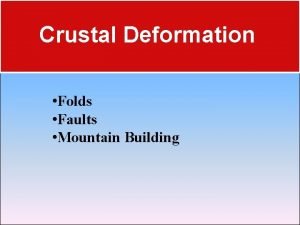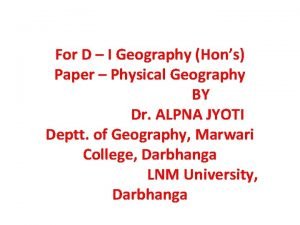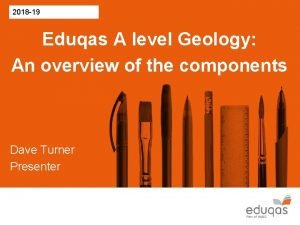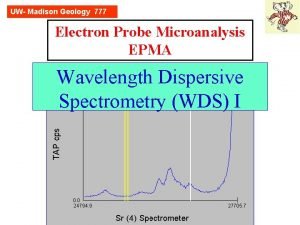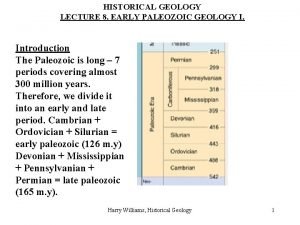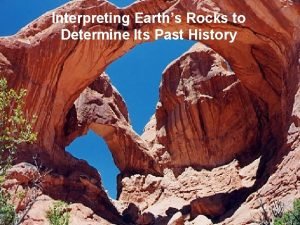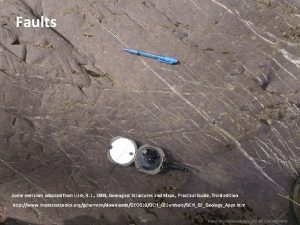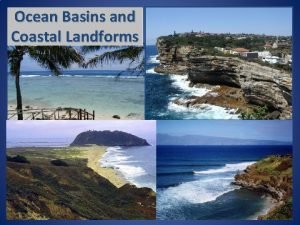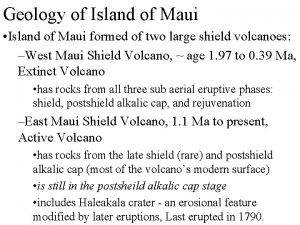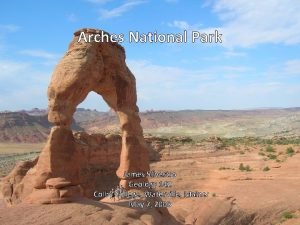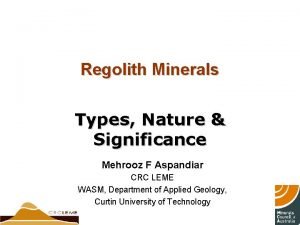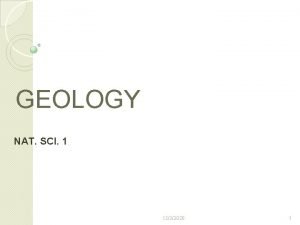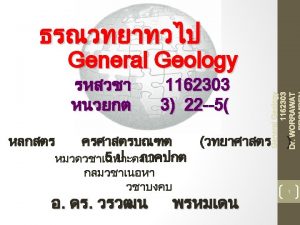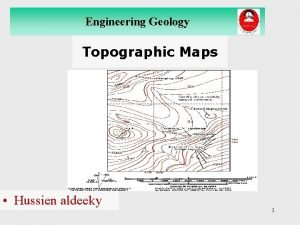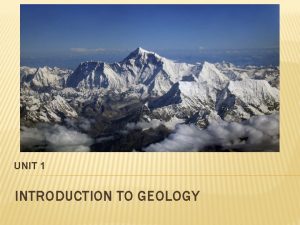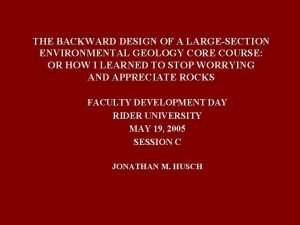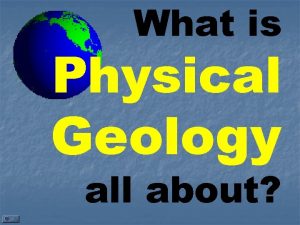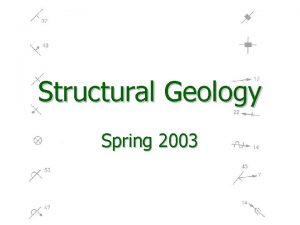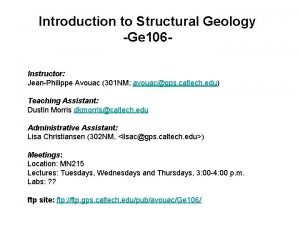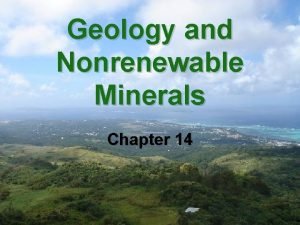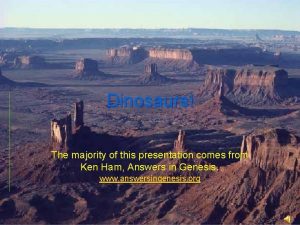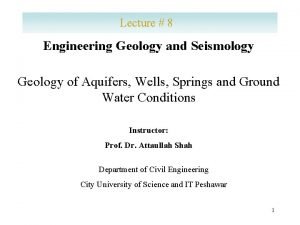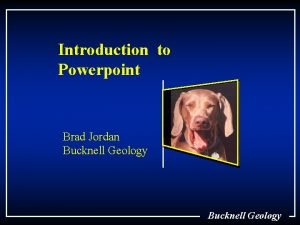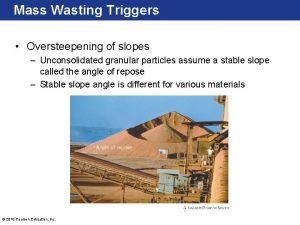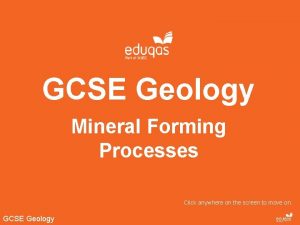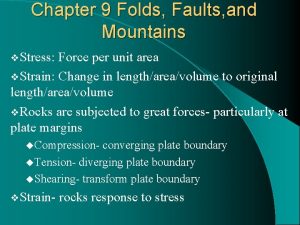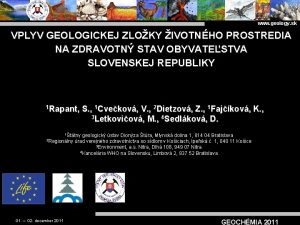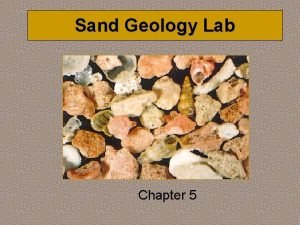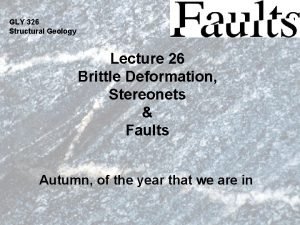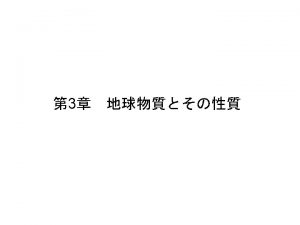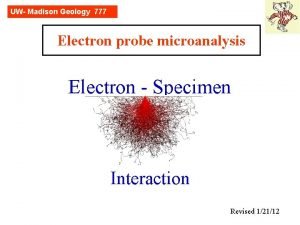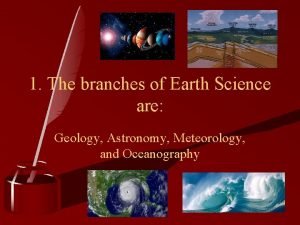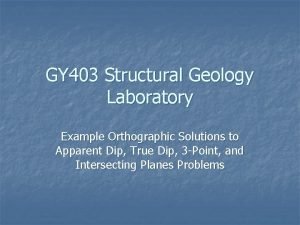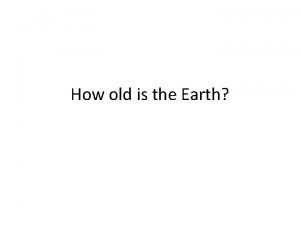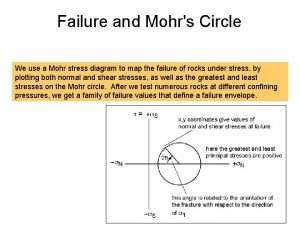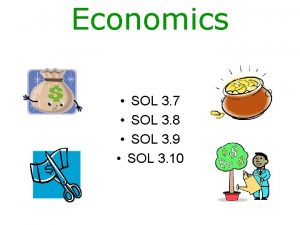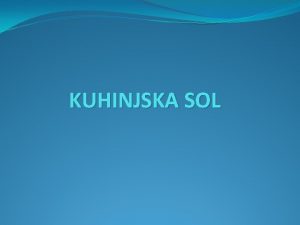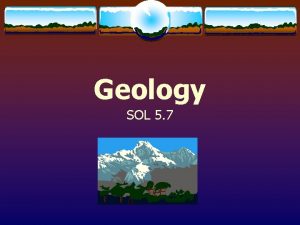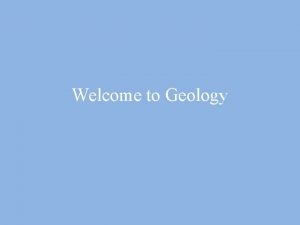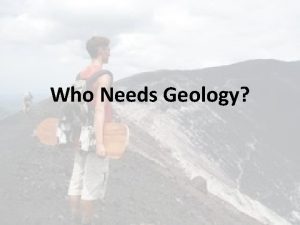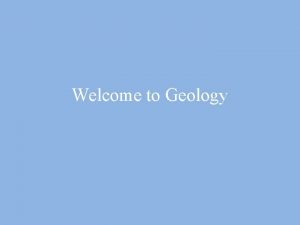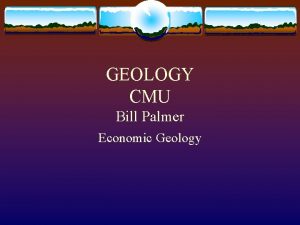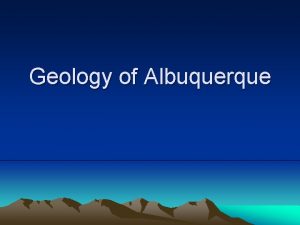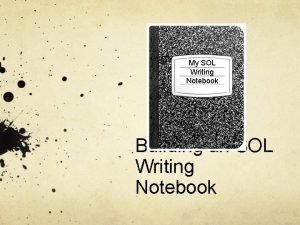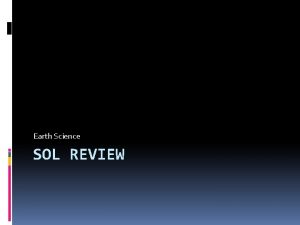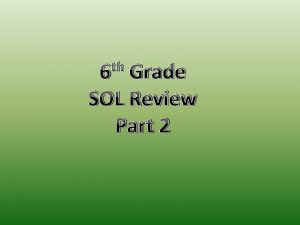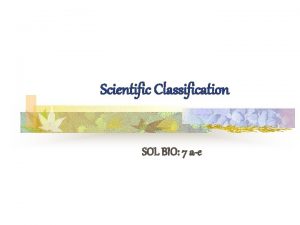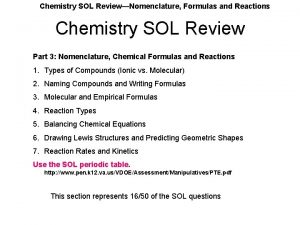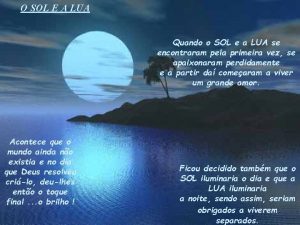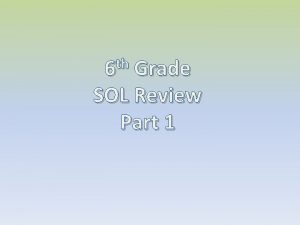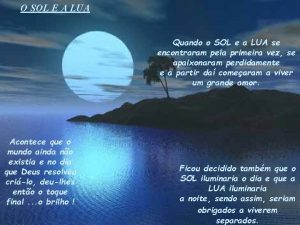Geology SOL 5 7 Geology 1 What is



























































































- Slides: 91

Geology SOL 5. 7

Geology 1 What is weathering?

Answer The gradual wearing away of rock by the forces of wind, water, and ice.

Geology 2 What is EROSION?

Answer The moving around of weathered materials by wind, water, or ice.

Geology 3 What types of geological activities cause changes to the Earth very slowly?

Answer Earthquakes, volcanoes, sink holes, plate movement, weathering, and erosion

Geology 4 What is an example of a change that can be made to the earth very rapidly?

Answer Those caused by severe weather like tornadoes or hurricanes.

Geology 5 What causes movement of material within the Earth?

Answer The Earth’s heat energy

Geology 6 There are over twelve of them on Earth, they float on the semi-solid mantle, and when they move, continents move with them.

Answer Plates

Geology 7 Where are most earthquakes and volcanoes located?

Answer Along faults

Geology 8 What is a fault?

Answer The boundary of two plates

Geology 9 What type of fault is this?

Answer CONVERGENT

Geology 10 What type of fault is this?

Answer Divergent

Geology 11 What type of fault is this?

Answer Transform boundaries Strike – slip boundaries or sliding boundaries

Geology 12 How can humans cause erosion?

Answer Deforestation, mining And overbuilding cities, highways, and roads.

Geology 13 What 6 thing can humans do to prevent or slow the process of erosion?

Answer 1. By establishing governmental regulations and legislation 2. planting trees 3. creating better drainage patterns 4. contour farming 5. preserving rain forests 6. limiting pollution.

Geology 14 What is the rock cycle?

Answer The rock cycle is a model that shows the continual process of change in the Earth and its rocks.

Geology 15 What causes rocks to change into other types of rocks?

Answer Heat and pressure from the inner Earth.

Geology 16 Do all changes in rocks occur very slowly?

Answer No. Some changes are very rapid, others take millions of years.

Geology 17 Is new material ever added to the Earth?

Answer No. The material of the Earth just cycles through various forms like heating, melting, weathering, and erosion and compression.

Geology 18 Can any rock become any other type of rock?

Answer Yes. There is no “one way” through the rock cycle.

Geology 19 What does this picture show?

Answer The Rock Cycle

Geology 20 Which rock sample would show us Granite?

Answer 1 Based on the picture, we can see crystals.

Geology 21 What type of rock are both 2 and 4?

Answer Sedimentary

Geology 22 What five things help us to identify rocks?

Answer Composition 2. Grain Size Textural features 4. Color Presence of fossils 1. 3. 5.

Geology 23 What is the name of this sample?

Answer Granite

Geology 24 What is the name of this sample?

Answer Gneiss

Geology 25 What is the name of this sample?

Answer Limestone

Geology 26 What is the name of this sample?

Answer Sandstone

Geology 27 What is the name of this sample?

Answer Slate

Geology 28 What is the name of this sample?

Answer Shale

Geology 29 What is the name of this sample?

Answer Coal

Geology 30 We classify rocks as Sedimentary, Igneous, or Metamorphic according to what?

Answer How they were formed.

Geology 31 What is a sedimentary rock?

Answer A rock in which layers of sediment are cemented together.

Geology 32 What is an igneous rock?

Answer A rock which was formed by melting and cooling of lava and magma.

Geology 33 What is a metamorphic rock?

Answer A rock that was changed by heat and pressure.

Geology 34 Scientific evidence indicates the Earth is very old. About how old is it?

Answer 4. 5 Billion years old

Geology 35 What is a fossil?

Answer Fossils are the remains of plants and animals that have been preserved in rock.

Geology 36 What is a “relative age? ”

Answer A rock’s age compared to another rock.

Geology 37 The process of how things have changed over time, or evolved, can be traced through what?

Answer Fossils

Geology 38 Fossils are indicators of past what?

Answer Climate and geography

Geology 39 The study of these has lead us to create a timetable that serves as a model for understanding the Earth’s past. This timetable is divided into eras (major time units).

Answer Fossils

Geology 40 The Earth’s interior is made up of three layers. What are they?

Answer Crust Mantle Core

Geology 41 The crust is made of what?

Answer Rock and soil

Geology 42 The mantle is made of what?

Answer Mostly solid rock and some partially melted rock.

Geology 43 The core is made of what?

Answer Melted rock (iron and nickel) and an inner core.

Geology 44 The layers of the Earth do what continuously?

Answer Break, fold, overlap, and diverge.

Geology 45 As depth increases below the surface of the Earth, what happens to temperature and pressure?

Answer They increase also.
 Koloid liofil contoh
Koloid liofil contoh Dharma wijewickreme
Dharma wijewickreme Jens hilke
Jens hilke What is geochemistry in geology
What is geochemistry in geology Www.geology.sk
Www.geology.sk Reverse graded bedding
Reverse graded bedding Science grade 2 worksheets
Science grade 2 worksheets Geology earth science definition
Geology earth science definition Quarttzite
Quarttzite What is trend and plunge in geology
What is trend and plunge in geology Push ridge
Push ridge Outcrop pattern
Outcrop pattern Geology
Geology Lithification definition geology
Lithification definition geology Types of folds geology
Types of folds geology Rule of v's geology
Rule of v's geology Geology
Geology Grenville province geology
Grenville province geology Orthographic projection geology
Orthographic projection geology Department of geology university of dhaka
Department of geology university of dhaka Geology 351
Geology 351 Plunging syncline vs syncline
Plunging syncline vs syncline Geology
Geology Mesa geology
Mesa geology Osn
Osn Structural geology
Structural geology Basin and range geology
Basin and range geology Clay basin storage
Clay basin storage Essentials of geology
Essentials of geology Whats regolith
Whats regolith What are sedments
What are sedments Stenos principles
Stenos principles Left lateral strike slip fault
Left lateral strike slip fault Geology
Geology Types of earthquake
Types of earthquake Geology map of holderness coast
Geology map of holderness coast Mappleton coastal management
Mappleton coastal management Jens hilke
Jens hilke Discordant coastline definition
Discordant coastline definition Sac state geology
Sac state geology Structural geology
Structural geology Types of extinction in optical mineralogy
Types of extinction in optical mineralogy Geology of cyprus
Geology of cyprus Geology of cuba:
Geology of cuba: Basalt rock
Basalt rock Gcse geology data sheet
Gcse geology data sheet Unconformity
Unconformity Geology
Geology Geology lecture series
Geology lecture series Geology
Geology Geology block diagram
Geology block diagram Eduqas geology
Eduqas geology Conformable contact geology
Conformable contact geology Types of folds geology
Types of folds geology Endogenetic forces
Endogenetic forces As level geology
As level geology Geology
Geology Historical geology
Historical geology Angular unconformities
Angular unconformities Structural geology practical exercises
Structural geology practical exercises Cliff terrace caves stacks
Cliff terrace caves stacks Geology of maui
Geology of maui James silvestro
James silvestro Regolith geology
Regolith geology Geology definition
Geology definition Geology
Geology Ridge contour lines
Ridge contour lines Geology what is
Geology what is Geology
Geology Define physical geology
Define physical geology Pumpelly's rule geology
Pumpelly's rule geology Structural geology
Structural geology Geology
Geology Entouka meaning
Entouka meaning Astronomy definition earth science
Astronomy definition earth science What are 5 themes of geography
What are 5 themes of geography Confined aquifer vs unconfined aquifer
Confined aquifer vs unconfined aquifer Introduction to geology ppt
Introduction to geology ppt Mass wasting
Mass wasting Gcse geology
Gcse geology Tension geology
Tension geology Geology sk
Geology sk Geology grain size card
Geology grain size card Geology
Geology Brittle deformation geology
Brittle deformation geology Prem earth
Prem earth Geology
Geology Strike in geology
Strike in geology Earth science vs geology
Earth science vs geology Three point problem geology
Three point problem geology Type of unconformity
Type of unconformity Mohr's circle
Mohr's circle
